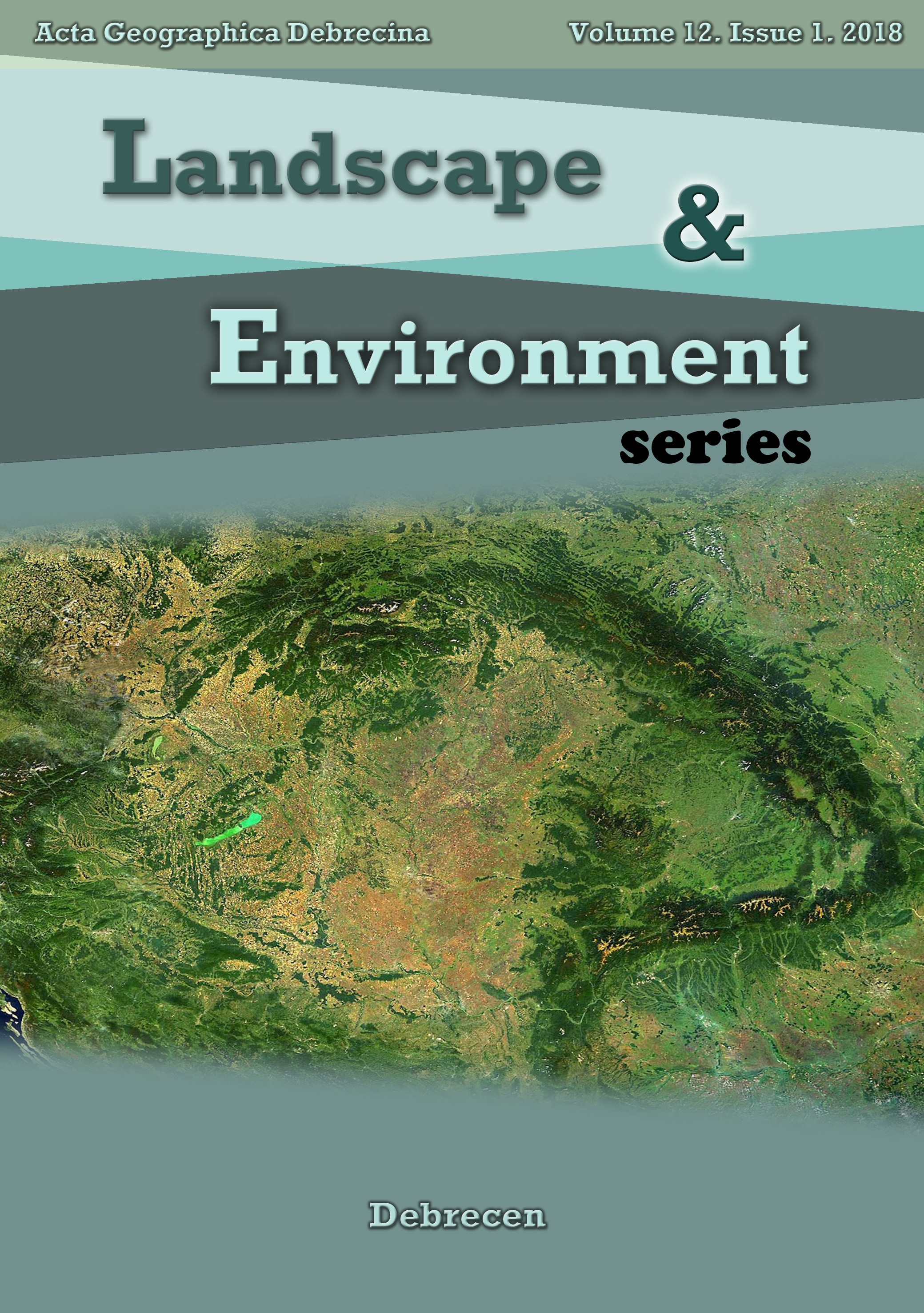Vol. 12 No. 1 (2018)
J.A. Jankó. – Gy Szabó. Regional Development in the Age of Big Data
S. O. Hussein – F. Kovács – Z. Tobak. – H. J. Abdullah. Spatial distribution of vegetation cover in Erbil city districts using high-resolution Pléiades satellite image
E. Jákli. Environmental educational potentials on school grounds in Budapest
Zs. Varga. – H. Czédli. Studying the accuracy of orthophotos on the example of various terrain models in study areas in Hungary
##issue.tableOfContents##
Articles
-
Regional Development in the Age of Big Data
1-9Views:145Our paper presents a forward looking analytical approach to the territorial development in a region of the Transylvanian Plain situated in the vicinity of Cluj-Napoca, Romania. We outlined the development of this region with the means of landscape architecture supported by a comparable assessment. In the age of Big Data we settled at creative usage of traditional analysis. We extracted yet undetected information from a limited amount of available as yet loosely related data. The key feature of the employed model is the ontological traceability of cause and effect. Although technology is available to collect enormous data, expert knowledge gained by education and professional practice cannot be overlooked. We demonstrate that this method of location based analysis is capable of delivering value added to established principles of spatial planning in the age of trustworthy, large volume, heterogeneous data.
-
Spatial distribution of vegetation cover in Erbil city districts using high-resolution Pléiades satellite image
10-22Views:189Green spaces are playing an essential role for ecological balance and for human health in the city as well. They play a fundamental role in providing opportunities for relaxation and enjoying the beauty of nature for the urban population. Therefore, it is important to produce detailed vegetation maps to assist planners in designing strategies for the optimisation of urban ecosystem services and to provide a suitable plan for climate change adaptation in one fast growing city. Hence, this research is an investigation using 0.5 m high-resolution multispectral Pléiades data integrated with GIS data and techniques to detect and evaluate the spatial distribution of vegetation cover in Erbil City. A supervised classification was used to classify different land cover types, and a normalised difference vegetation index (NDVI) was used to retrieve it for the city districts. Moreover, to evaluate the accessibility of green space based on their distance and size, a buffer zone criterion was used. The results indicate that the built-up land coverage is 69% and vegetation land cover is 14%. Regarding NDVI results, the spatial distribution of vegetation cover was various and, in general, the lowest NDVI values were found in the districts located in the city centre. On the other hand, the spatial distribution of vegetation land cover regarding the city districts was non-equal and non-concentric. The newly built districts and the districts far from the Central Business District (CBD) recorded the lowest vegetation cover compared with the older constructed districts. Furthermore, most of the districts have a lack of access to green spaces based on their distance and size. Distance and accessibility of green areas throughout the city are not equally distributed. The majority of the city districts have access to green areas within radius buffer of two kilometres, whereas the lowest accessibility observed for those districts located in the northeast of the city in particular (Xanzad, Brayate, Setaqan and Raperin). Our study is one of the first investigations of decision-making support of the spatial planning in a fast-growing city in Iraq and will have a utilitarian impact on development processes and local and regional planning for Erbil City in the future.
-
Environmental educational potentials on school grounds in Budapest
23-30Views:167As nature and greenspaces in urban areas are agreed to enhance children’s appreciation towards nature and so the purposes of environmental education, it is of high importance to create spaces in and around schools that allow students to connect to nature on a daily basis. The aim of the study was to analyse functions and other components supporting environmental education appear in the open spaces of school grounds in Budapest, and to understand the main characteristics of school grounds with the highest potential in environmental education. The study points out that the presence of environmental educational functions often depends on the size, urban context and location of the school grounds, however the curriculum of the school does not necessarily influence its open spaces, while the presence of motivated and engaged teachers does. The study reveals environmental educational functions do exist in school grounds of primary schools in Budapest, however they play only secondary role behind active movement and play functions. The schools with the best potentials in environmental education are without doubt the ones situated on large plots in the suburban zone, mostly with a high proportion of green spaces in and around the school grounds.
-
Studying the accuracy of orthophotos on the example of various terrain models in study areas in Hungary
31-39Views:135Depending on the orientation data, the accuracy of the applied terrain models and the field content of the orthophotos data of different accuracy can be obtained in the course of analysing orthophotos. Considering the factors influencing accuracy, differences resulted by the application of different elevation models are studied in this paper in two study areas in Hungary. Primary aim of this study is to determine the magnitude of differences between the co-ordinates of reference points digitized from orthophotos and that of points measure.
